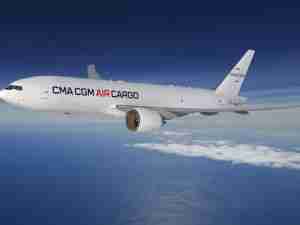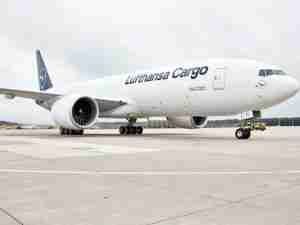- Revenue in 1H rose 0.4% to HK$45.9 billion
- Passenger load factor rose to 84.7% from 84.5% a year ago
- Revenue passengers carried declined 0.5%
- Yield on routes between Hong Kong and mainland China was under pressure because of increased competition, particularly from low-cost carriers
- Cargo demand was robust in the first half
- Other major adverse factors were higher fuel prices (including the effect of Cathay’s hedging), the strength of the Hong Kong dollar on revenues denominated in other currencies and higher aircraft maintenance costs
Cathay Struggles to Get Top Dollar From Fliers Amid Revamp
By: | Aug 16 2017 at 05:15 AM | Air Cargo
Cathay Pacific Airways Ltd. is slipping in its efforts to get passengers to pay more for its premium services in a test for new Chief Executive Officer Rupert Hogg as the company reported back-to-back losses.
Passenger yields continued to decline in the first half of the year, led by its services to North America and Europe, as discounts to help fill seats took a toll on the key metric of profitability. The measure—the money earned from carrying a passenger for one kilometer—declined 5.2 percent to 51.5 Hong Kong cents, hovering around the lowest level since 2009, Cathay said in a statement Wednesday.
Buffeted by budget carriers and deep-pocketed competitors on the mainland, Cathay is at the crossroads. It risks being eclipsed by Chinese airlines that offer cheaper, direct long-haul flights from cities like Shanghai, Guangzhou and Shenzhen, bypassing Hong Kong, whose prominence as a hub has declined relative to the burgeoning wealth of the surrounding cities in southern China.
The marquee airline reported a net loss of HK$2.05 billion ($262 million) for the six months through June, potentially putting it on course for the first back-to-back annual losses in its 70-year history. The loss compares with the median HK$1.2 billion loss forecast in a Bloomberg survey of three analysts.
Read More: Is Cathay’s Late Show a Final Bow for Independence?: Gadfly
“We do not expect the operating environment in the second half of 2017 to improve materially,” Hong Kong-based Cathay’s Chairman John Slosar said in the statement. “We expect to see the benefits of our transformation in the second half of 2017, and the effects will accelerate in 2018.”
Cathay isn’t the only airline feeling the heat of competition. Singapore Airlines Ltd., under pressure from rivals such as Emirates Airline and Etihad Airways PJSC, said in June jobs are likely to be cut as part of a review it said had started more than six months earlier.
Hogg, who took over as Cathay’s CEO on May 1, announced the elimination of 600 jobs the same month as part of a three-year transformation program Asia’s biggest international airline revealed earlier in the year.
Cathay has had to resort to seasonal discounts for its front seats after saying last year that premium travel was slumping, causing passenger yields to decline.
Cathay has reported losses only for three years since it was founded in 1946—once in 1998 in the aftermath of the Asian financial crisis; again, in 2008 as the global credit crisis unfolded; and, last year as a result of fuel-hedging bets gone wrong and intensifying competition.
Highlights from the statement:










